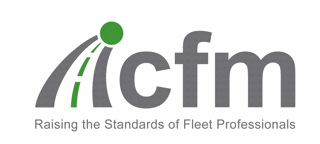At May’s ICFM Annual Members’ Conference, it was highlighted that the next two years would see a fundamental shift in the management of fleets and pivotal changes in the industry, the likes of which were unprecedented.
Coupled with this is the much-discussed backdrop of Brexit, but from the ICFM perspective, fleet operators should concentrate on the fact that they will still have cars and vans to manage regardless of the Brexit position.
Faced with such potentially significant levels of change and development, it would follow that many fleet managers are posing the question – “how should I face these challenges and manage the transformation of my fleet?”.
The first thing to acknowledge is that, if managed properly, change can be both rewarding for the business as a whole and personally satisfying for employees involved. However, that will only be achieved if four principles are applied:
Step 1: Build the case for change – obtaining ‘buy in’ is the first step in any change management programme.
Step 2: Share vision and values – don’t ‘go it alone’ always involve other fleet stakeholders.
Step 3: Scope out a plan that will identify the resources and information required. Change management programmes only succeed if adequately resourced and well detailed.
Step 4: Review the management and leadership capabilities of the stakeholders involved. In the current fleet landscape, full account will have to be taken of the fact that the industry is not only developing at an alarming pace, but also wrestling with an ever-expanding list of key priorities.
These currently include globalisation, ‘mega cities’, big data, connected and autonomous vehicle technology, and business mobility-as-a-service.
If you add into the mix the challenges of urbanisation, environmental pressure, powertrain selection, traffic congestion, politics, legislation and taxation, the end result is that fleet decision-makers are presently swamped in a muddy pool of developing policies.
But it is important to recognise that this is a fantastic opportunity that will inspire those who have a real appetite and business acumen to improve their skills, become more creative and set the new standards required.
So, where should we start? Well if we apply the four steps suggested above, the overview might look something like this:
Step 1: Building a case
At first glance, it might be considered that building a case for future vehicle acquisition, with specific emphasis on environmental control, can be simply addressed by promoting a vehicle fleet that meets the Government policy to end the sale of new conventional petrol and diesel cars and vans by 2040.
However, by 2030 the Government also expects 50-70% of new car sales to be ultra-low emission vehicles (less than 75g/km of CO2) and up to 40% of vans.
To put those figures into context, with just 2.6% of cars registered in 2018 being ultra-low emission and only 0.5% of vans, the clock is already ticking.
The simple truth is that the availability of ultra-low emission vehicles is playing catch-up with those targets, the first of which, for many fleet operators, is only three vehicle replacement cycles away!
To make matters even more difficult, the Treasury has no committed company car benefit-in-kind (BIK) tax policy beyond a short-term position up to 2021.
So, planning a vehicle acquisition policy at present is not easy. But, given all the current ingredients, it would be prudent to take the following into consideration:
Analyse and break your vehicle fleet down into sectors
* Cars and LCVs
* Essential users/‘perk’ allocation
* High and low mileage
* Usage trends (particularly the low mileage segment)
Take a ‘blended’ approach to aligning the best mix of powertrain options to (1) above
* Battery electric vehicles
* Ultra-low emission vehicles
* Petrol/diesel
Consider manageable options – again in relation to (1) above
* Cash for car
* Grey fleet
* Short-term hire
* Extending the current vehicle fleet retention policy. Particular care should be taken NOT to extend the highest polluting vehicles
By taking this type of approach, building a case for the vehicle acquisition policy running up to 2030/2040 is less likely to be affected by any radical change in Government policy, as was demonstrated previously with the ‘demonisation’ of diesel vehicles.
The options can be developed in an informed and systematic way with particular attention paid to the uncertainty that presently exists, specifically relating to vehicle taxation.
Step 2: Share vision and values
It follows that with such a diverse and complex range of challenges and options, involving other fleet stakeholders in the business is not simply a hygiene factor, it is an absolute necessity.
Take for example, what we have already identified with taxation and the fact that the Treasury has no committed policy beyond a short-term position up to 2021, then gaining input and budget agreement from the company’s finance director is essential.
The same principle applies to the other fleet-responsible stakeholders within a business:
Human resources: The HR manager must be consulted regarding any vehicle policy changes that could affect contract of employment terms/welfare etc. or set unwanted precedents.
Compliance/duty of care: A compliance manager’s input regarding the vehicle fleet being ‘fit for purpose’ is again an essential inclusion in order to tick all the legislation boxes.
Finance: As already identified, highlighting all the likely outcomes from any policy change and gaining financial approval from a company’s finance director/manager is critically important.
Procurement: Representation from the procurement team is arguably one of the most important considerations, since they will provide input and take responsibility regarding the key areas of strategic compliance, providing expert advice and supply chain selection.
Fleet operations: Don’t forget the fleet team. They should always be consulted regarding the fleet manager’s vision and values and their contribution will play a vital part in the development of the fleet.
Step 3: Scope out a plan
Project scope planning is a key management function and should include high level features and objectives that the fleet-responsible stakeholders have committed to delivering.
Each part of the project to develop the vehicle fleet policy will be unique and will require a careful balancing act that will involve best practices, processes, tools and techniques.
It is good practice to have an ‘executive sponsor’ from the company’s senior management team to oversee the process and also prudent to include a representative fleet user whose interests may be affected by the project and who can exert influence over the project and/or its deliverables to other vehicle fleet users.
Step 4: Review the management and leadership capabilities of the stakeholders involved
When building a fleet fit for the future, developing and adapting the business model will need to take account of the differing disciplines and priorities that exist with each of the fleet-responsible stakeholders.
They will all have their own individual agendas and it is worth recounting on a few pointers that I covered in a previous article regarding managing others effectively .
These include allocating time to build and develop relationships; developing personal people skills to ensure that the right level of communication and collaboration techniques occurs; adopting a positive stance with colleagues and key stakeholders.
In summary, here are five tips to ensure fleet resilience when managing transformation:
1 Adopt the four-step plan outlined.
2 Don’t attempt to ‘go it alone’ and ensure ‘buy in’ from all the fleet-responsible stakeholders involved.
3 Keep a close eye on the developing position with Government policy regarding taxation and the environment.
4 Take a pragmatic approach when considering how to ‘balance’ new vehicle fleet policy and requirements.
5 Make informed decisions regarding extending replacement of the current fleet and considering tangible alternatives.
The area of fleet resilience and managing transformation is a complex one and I have covered some of the key factors involved.
Would you like to know more?
For expert help and advice join the ICFM, which provides access to a wide range of fleet operational best practice tips. Email administration@icfm.com for further information and please mention Fleet News.


















Login to comment
Comments
No comments have been made yet.